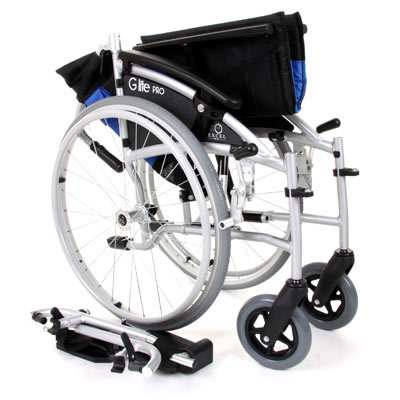This guide is intended to help explain the features and factors to consider when buying a manual wheelchair. There are many different types of wheelchairs available, some of which are designed for users who have complex requirements and who need to spend significant periods of time in the chair. Advice on more specialist needs is available from your local wheelchair services or occupational therapist who may also be able to recommend funding for this type of wheelchair. This guide is not intended to replace this specialist help.


Self Propel or Attendant Propel
If you intend to propel yourself in the chair using pushrims on the rear wheels, you will need to look at ‘self propelling’ wheelchairs which have large back wheels. Whilst these chairs are designed to be used by the chair user, they normally have pushing handles on the back so that someone can push you where needed. The larger back wheels can be an advantage when being pushed up kerbs or over other obstacles. If you are not strong enough to propel yourself and intend to rely on someone else pushing the chair, you are normally better off with an attendant propelled or transit wheelchair. These have smaller rear wheels and can be easier to manoeuvre for the person pushing. They also tend to be easier to put in to the boot of cars, although most wheelchairs now feature quick release wheels. They are no hard or fast rules about which type of chair to go for.
Overall Weight of The Wheelchair

The weight of the wheelchair is obviously important if you are intending to transport it by car and it can also effect how difficult the chair is to push. The lighter the frame the easier it will be to lift and therefore to put in to the car. It will also be easier to push the occupant as there will be less weight and the chair will be more manoeuverable. Whatever the weight of the user, the lighter the chair, the easier it will be for the person pushing it. Whilst lightest is normally best, the cost of lightweight wheelchairs increases sharply. Most standard chairs are constructed with a steel frame. The more lightweight chairs are generally made from an aluminium frame which can cost considerably more. Another factor to bear in mind when thinking about weight, is the number of detachable parts to the wheelchair. Most wheelchairs have detachable footplates, but some also have removable arms and wheels.
Storing Your wheelchair

Most wheelchairs fold upwards by pulling up on the seat. This operates a scissor action folding mechanism, pulling the wheels together. Dependent on the specific type of wheelchair, a range of parts may also be detachable such as the footrest, arms and wheels. Typically the footrests have a quick release lever for easy removal. It may also be possible to fold down the back to half the normal height. Once all these part are removed, the wheelchair can normally be stored quite easily.
